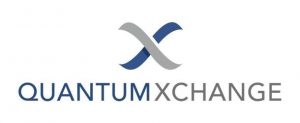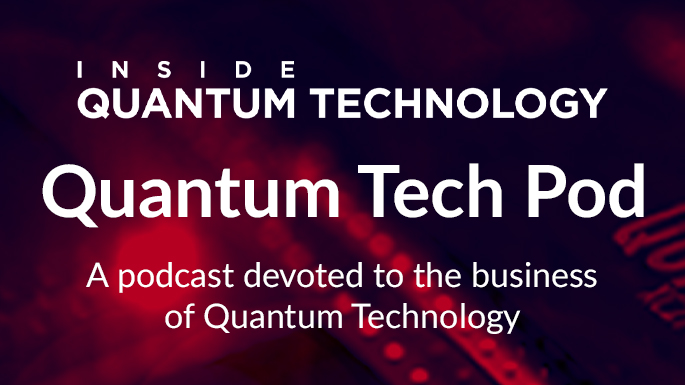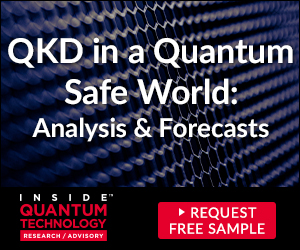Quantum News Briefs February 10: Quantum Bridge Technologies testing multiple quantum-safe communications tools with government of Canada; Report on the EU’s Quantum Technologies Flagship Initiative; Quantum Xchange launches partner program to give managed connectivity providers and networking-as-a-service vendors competitive advantage + MORE

Quantum Bridge Technologies testing multiple quantum-safe communications tools with government of Canada
 Quantum Bridge Technologies (QBT), makers of a range of advanced quantum-safe communications solutions, today announced that the company has obtained a contract under the Innovative Solutions Canada program (ISC) Testing Stream. ISC is a Government of Canada R&D innovation funding program dedicated to Canadian innovators who want to innovate, create and get to market. The contract is worth $1 million (CAD) to QBT, and will see ISC trialing both the company’s Key Management Entity and Black Phone products. Quantum News Briefs summarizes the announcement below.
Quantum Bridge Technologies (QBT), makers of a range of advanced quantum-safe communications solutions, today announced that the company has obtained a contract under the Innovative Solutions Canada program (ISC) Testing Stream. ISC is a Government of Canada R&D innovation funding program dedicated to Canadian innovators who want to innovate, create and get to market. The contract is worth $1 million (CAD) to QBT, and will see ISC trialing both the company’s Key Management Entity and Black Phone products. Quantum News Briefs summarizes the announcement below.
The Key Management Entity (KME) provides easy-to-use, cost efficient, compact DSKE client services which deliver keys to network hardware in any layer of the communications stack, such as network encryptors and switches, and connect easily through standard API calls. These keys are used to make existing communications equipment safe from malicious attacks by a quantum computer, and eliminate any vulnerability.
Black Phone is the first application that employs pre-shared keys on mobile devices. It protects a device’s messaging, voice and video calls as well as file transfer, all with end-to-end encryption and authentication. Its cryptographic keys are delivered using DSKE protocol.
Quantum Bridge Technologies was founded by Dr. Mattia Montagna and Professor Hoi-Kwong Lo, leveraging decades of research expertise developed by Professor Lo’s team at the University of Toronto. The company offers a suite of unbreakable, trustless quantum-safe communication solutions for discerning customers who absolutely cannot afford a breach. QBT is also actively researching cutting-edge engineering and theoretical problems related to achieving long- distance quantum communication, and is developing multiple proprietary technologies to make current internet and cellular networks quantum-resilient.
Report on the EU’s Quantum Technologies Flagship Initiative

The data reveals European scientists filed hundreds of patents relating to quantum in the 2018 – 2021 period, which was considered the initial “ramp up” phase for Quantum Flagship’s programming. A total of 1313 scientific papers were published with a further 223 under review. Those 1,500 or so quantum scientists filed 105 patents to tee up commercialization, with 64 of these currently active.
In the initial four-year period, the Commission poured €150 million into 24 research consortia, with support from 39 public research boards providing an additional €88.9 million under the QuantERA banner.
The present report marks the conclusion of the review of 21 presentation”projects in the areas of:
•quantum computing: built a quantum computer system of globally competitive performance
based on superconducting circuits, as well as conducted very promising work on other computing
platforms such as trapped ions and silicon qubits
•quantum simulation: developed two 100–qubit analogue quantum simulators and reached
practical quantum advantage in scientific problems involving the study of new materials and
phases of matter (e.g. superconductivity, highly entangled systems)
•quantum sensing and metrology: developed some of the world’s most advanced quantum sensors
based on nitrogen vacancy centres in ultrapure diamond and made significant advances towards
improved medical imaging diagnostics and spectroscopy, and ultra–precise clocks
•basic quantum science: made significant advances towards the development of several alternative
computing platforms, including photonics–based quantum computing.
helped to form 25 startups and spinouts in all areas of quantum tech, including computing, simulators, sensors and metrology.
Download the complete Quantum Technologies Flagship Final Report by clicking here.
Quantum Xchange launches partner program to give managed connectivity providers and networking-as-a-service vendors competitive advantage

Quantum Xchange, delivering the future of encryption with its crypto-agile management platform, announced on February 8 the launch of the Phio Partner Program (P3) aimed at managed connectivity providers, networking-as-a-service vendors, SD-WAN and VPN original equipment manufacturers (OEM), managed security service providers (MSSP), and other value-added resellers (VARs) servicing the network infrastructure market. Quantum News Briefs summarizes.
5G, digital transformation, the hybrid work environment, and the proliferation of Internet-connected devices, have organizations replacing legacy, appliance-based, hub-and-spoke networking architectures with transformational Secure Access Service Edge (SASE) architectures that can better support the work-from-anywhere enterprise, the movement of critical applications to the cloud, and the provisioning of secure network services. In this new networking environment, where critical data flows freely from headquarters, to branch offices, the data center, and to the cloud, bringing quantum-safe security to every data link, interconnect, VPN tunnel, and endpoint is an attractive differentiator.
Quantum-safe encryption and crypto-agility are not common features of existing network infrastructure, SD-WAN or VPNs. Vendor agnostic and platform independent,from Quantum Xchange can easily integrate with any infrastructure to instantly upgrade these technologies with quantum-safe encryption while further modernizing the implementations with cryptographic policy control and management capabilities. The patented and FIPS 140-2/3 validated technology brings cryptography out of the data path. This gives providers of managed connectivity a convenient and easy-to-use crypto control plane for their customers.
Leveraging Quantum Xchange’s innovative technology and managed services, secure networking and connectivity providers can generate new revenue streams that are agile, secure, and responsive to consumer preferences. Further benefits of the P3 partner program include:
- Deal registration and qualified lead delivery
- Sales and technical enablement with certifications
- Tiered program levels with corresponding discounts
- Co-marketing programs and funds
Click here to read Quantum Exchange announcement in-entirety.
DARPA gets serious about quantum: five-year funding To build fault-tolerant quantum computers goes to Atom Computing, Microsoft & PsiQuantum
DARPA, the Defense Advanced Research Projects Agency, has announced that it has selected the companies that will receive funding under its “Underexplored Systems for Utility-Scale Quantum Computing (US2QC)” (US2QC) program. Quantum News Briefs summarizes the February 1 discussion in Forbes by Paul-Smith Goodson about the importance of the funding and the recipients.
DARPA is sponsoring the US2QC program to explore new ways to scale qubit count for larger systems, create additional layers of entanglement connectivity for faster performance and develop a broader set of quantum error correction algorithms for fault tolerance. Specifically, DARPA wants to determine if relatively new quantum technologies such as neutral atom, topological and photonics can be leveraged to develop a fault-tolerant quantum computer within ten years. Although the amount of funding wasn’t specified, Smith-Goodson expects it will be enough to significantly move the needle for the corporate teams involved, given the program’s five-year span and DARPA’s $4.1 billion 2023 budget.
The recipients are:
–Atom Computing
–PsiQuantum
–Microsoft
DARPA is sponsoring the US2QC program to explore new ways to scale qubit count for larger systems, create additional layers of entanglement connectivity for faster performance and develop a broader set of quantum error correction algorithms for fault tolerance. Specifically, DARPA wants to determine if relatively new quantum technologies such as neutral atom, topological and photonics can be leveraged to develop a fault-tolerant quantum computer within ten years. Although the amount of funding wasn’t specified, I expect it will be enough to significantly move the needle for the corporate teams involved, given the program’s five-year span and DARPA’s $4.1 billion 2023 budget.
It is important for the United States to maintain its global lead in quantum computing and be the first to build a fault-tolerant quantum machine. Joe Altepeter, US2QC program manager in DARPA’s Defense Sciences Office, helped explain why. He said: “Experts disagree on whether a utility-scale quantum computer based on conventional designs is still decades away or could be achieved much sooner. The goal of US2QC is to reduce the danger of strategic surprise from underexplored quantum computing systems.” Read Smith- Goodson’s article in-entirety by clicking here.
Sandra K. Helsel, Ph.D. has been researching and reporting on frontier technologies since 1990. She has her Ph.D. from the University of Arizona.
























